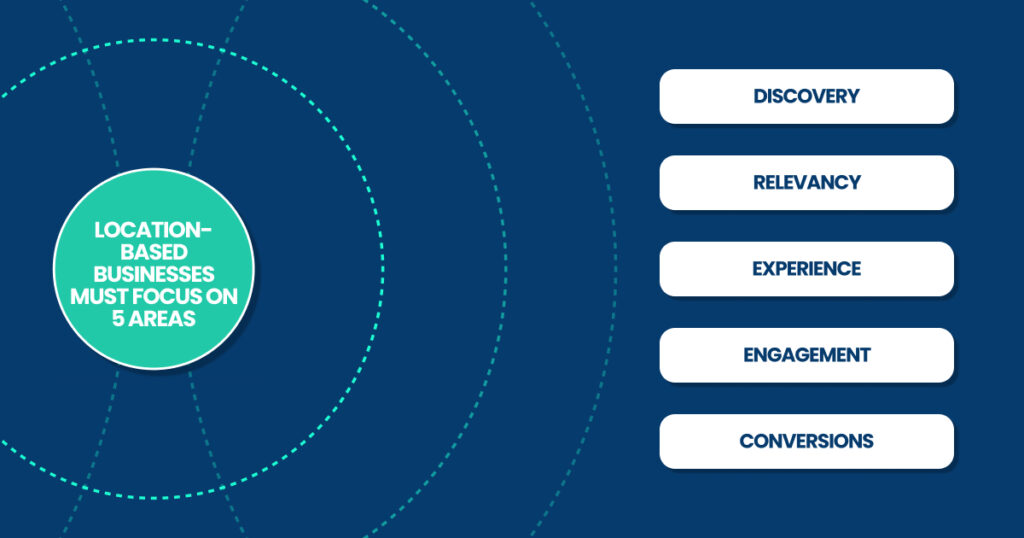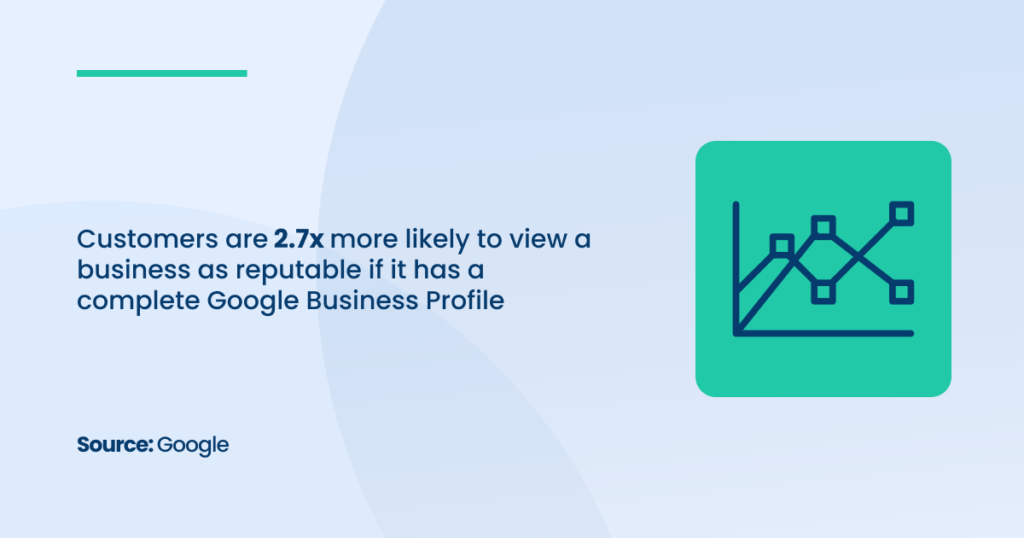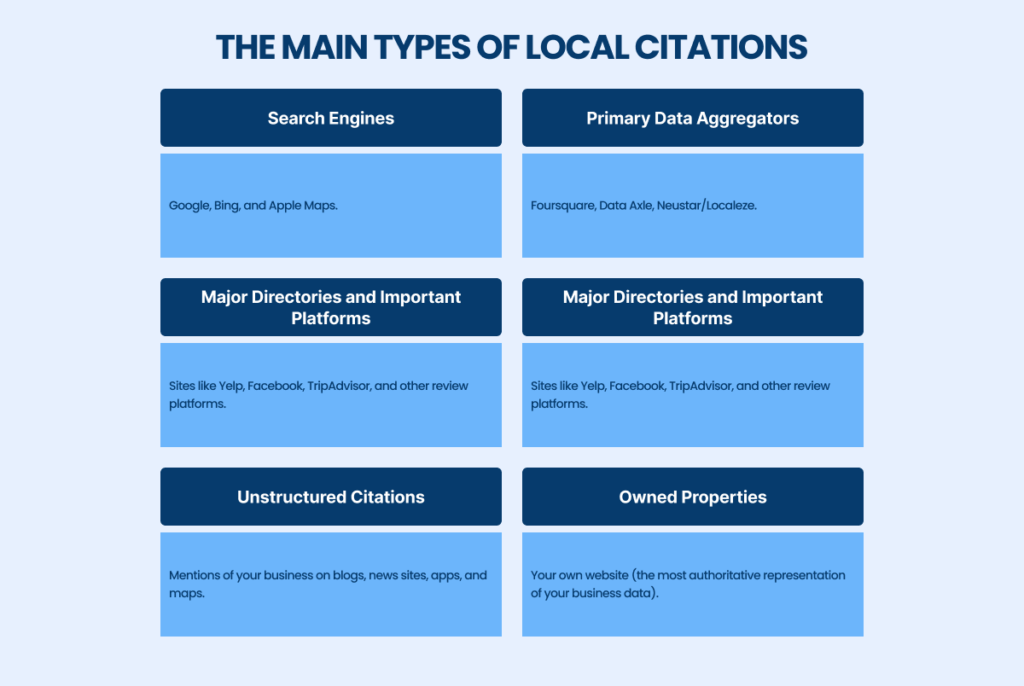Are local customers finding your business or heading straight to your competitors?
Being visible when someone searches for services near them is more important than ever.
For example, 60% of mobile users reach out to businesses directly from Google search results.
If you’re not showing up at the top, you’re missing out on valuable leads.
But as search engines evolve, so do the strategies for staying visible.
AI-powered search is reshaping ranking results, focusing more on what users want.

That’s why many businesses partner with a Local SEO Agency to stay on top of these changes and ensure their local presence is optimized.
Want to stay ahead? Then, keep reading, as we’ll discuss the latest local SEO trends that prioritize relevance, engagement, and user experience.
Why Local SEO Matters
1. Local Search Drives Action: Local SEO helps businesses show up when potential customers search for products or services nearby. This makes it easier to attract ready-to-buy customers, whether looking for a restaurant, a plumber, or a real estate agent.
2. High Conversion Rates: When your business appears in local searches, it often leads to direct action. Consumers searching locally are more likely to visit your store, book an appointment, or make a call.
3. Growing Mobile Usage: With more people using mobile devices to search, the importance of being visible on the go can’t be overstated. Local SEO ensures your business appears in front of users right when they need it, whether for quick directions, hours of operation, or product availability.
4. Builds Trust and Authority: Local SEO doesn’t just get you seen—it builds credibility. Positive reviews, user-generated content, and accurate business information all contribute to how trustworthy your business appears online. When searchers see a well-optimized local listing, they’re more likely to choose your business over a competitor.
5. Stay Ahead of Competitors: Local SEO allows you to outperform your competitors by focusing on hyper-local tactics, such as local citation building and local backlinks.
Trend 1: Optimize Your Google Business Profile (GBP)

Source: Google
One of the most important steps in local SEO marketing is optimizing your Google Business Profile (GBP).
This is often the first thing potential customers see when they search for services in their area.
Google My Business Optimization helps you rank higher in local searches and provides essential information like your location, hours, and reviews—all in one place.
As part of the latest local SEO trends, businesses are also focusing on adding more detailed information to their profiles:
- uploading high-quality photos
- regularly updating posts
- responding to customer reviews
Source: Wordstream
Keeping your profile fresh and accurate helps build trust with searchers and increases the chances of them choosing your business over a competitor.
Lastly, ensure your GBP is connected to other local directories and citation listings.
Consistency in business information across platforms boosts your credibility with search engines, improving your visibility in local search results.
Trend 2: Master Local Citation Building
Imagine a potential customer who searches for the “best plumber in California” on Google.
One of the top results they’ll likely see is a Yelp listing of local plumbers.
Source: Yelp
If you’re a plumbing business owner and you’re not listed on Yelp, you’re missing a huge opportunity to appear in front of customers actively searching for your services.
What is the Local Citation Building?

Local citation building is one of the most actual local SEO trends.
It’s the practice of distributing and maintaining a business’s information across the internet, also known as listings management.
It ensures that your business is visible where customers are searching, such as search engines, review sites, and online directories.
By aligning your citations with local search intent, you can meet customers’ needs right when they’re looking for specific services in their area.
The process involves:
- Identifying your existing citations across the web.
- Claiming local business listings to gain control over them.
- Updating outdated or incorrect information.
- Adding new details where necessary, like business hours or services.
- Removing duplicate or fraudulent listings.
- Creating new listings in important directories like Yelp, Google My Business, and others.
Trend 3: Boost Local Search Visibility with Entity-Rich Content
Let’s move to one of the leading trends in Local SEO – creating entity-rich content.
This type of content goes beyond simple keywords; it focuses on providing detailed, contextually rich information.
How to leverage this strategy:
- Incorporate specific local details – Mention your location, services, and any unique aspects related to your community. For example, if you’re a restaurant, highlight local events you’re involved in or special dishes tied to the area.
- Create content that connects with local intent – Consider what your local customers are searching for. Are they looking for “plumbers near me” or “best local Italian restaurant”? Tailor your content to answer these queries by being specific.
- Use testimonials and user-generated content. Share reviews and stories from local customers. This provides authentic content and boosts trust and credibility within your community.
- Engage with local events or partnerships – Write blog posts or articles about your involvement in local festivals, sponsorships, or partnerships with other local businesses. This type of content strengthens your connection to the area.
Why is entity-rich content important?
Search engines, especially with AI-driven algorithms, now prioritize context and connections over just keyword stuffing.
Trend 4: Prioritize Geo-Targeting and Geofencing
Geo-targeting and geofencing are two powerful local SEO trends that help businesses connect with customers based on their physical location.
These tactics enable you to engage local consumers when they’re nearby and ready to take action.
So, how do you maximize geo-targeted SEO for your business?
What is Geo-Targeting?
Geo-targeting delivers content or ads based on the user’s location, helping you craft tailored messages that resonate with local audiences.
- Use Location-Specific Keywords – Incorporate phrases like “dentist in Chicago” or “best coffee shop in Miami” to attract local searches.
- Create Customized Content—Design landing pages for different regions, addressing customers’ specific needs and concerns in those regions.
- Launch Localized Ads – Focus your ad spend on specific cities, neighborhoods, or regions to increase engagement.
What You Need to Know for Geo-Targeting
To create effective geo-targeted content, you need to understand key details about your audience. Here are the crucial factors to consider:
- Demographics – Know your audience’s age, gender, income level, and interests to create more relevant content.
- Geographic Location – Focus on where your customers are located, whether it’s a city, neighborhood, or even a specific street.
- Local Preferences – Customize your messaging to match the culture, habits, or preferences of the local population.
- Tailored Content – Create content that addresses specific needs based on the location, such as weather, local events, or popular trends in that area.
What is Geofencing?
Geofencing sets up a digital perimeter around a specific geographic location.
When users enter that zone, they receive targeted notifications or ads.
This approach works especially well for mobile users.
- Real-Time Offers – Send promotions to users when they enter your geofenced area, like offering discounts to customers near your store.
- Target Competitor Locations – Set geofences around competitor businesses to offer deals to potential customers shopping nearby.
- Boost Mobile Engagement – Use geofencing to trigger ads when people are physically close to your location, encouraging them to visit.
Trend 5: Strengthen Local SEO with Voice Search Optimization
Voice search is rapidly transforming how consumers find local businesses, making it one of the key local SEO trends businesses must embrace.
By optimizing for voice search, you can draw in local customers while keeping a strong advantage over your competitors.
Voice searches are typically conversational and often revolve around local needs, such as “Where’s the closest coffee shop?” or “Find a dentist near me.”
Source: SEMrush
As more people turn to virtual assistants like Siri and Google Assistant, businesses must tailor their SEO strategies to match this growing trend.
How to Optimize for Voice Search
- Use Conversational Keywords – People speak differently than they type. Use long-tail keywords that match how users would naturally ask questions (e.g., “Where’s the best coffee shop near me?” instead of just “coffee shop”).
- Focus on Local Intent – Make sure your content addresses specific local queries by including location-based terms and phrases naturally.
- Enhance Your FAQ Section – Answer common questions about your business conversationally. This is especially useful for voice search, as many voice queries are framed as questions.
Trend 6: Improve Technical SEO and Site Architecture
A well-organized website is the foundation of good local SEO. Technical SEO and how your site is structured help search engines easily find, understand and rank your pages.
This is a key part of trends in local SEO because it ensures your website runs smoothly and shows up higher in local search results.
Technical SEO refers to optimizing your website’s behind-the-scenes aspects.
It impacts your site’s performance in search engines and directly affects user experience.
Key factors include:
- Mobile Optimization – With most local searches happening on mobile devices, your website must be fully optimized for mobile responsiveness. A slow or unresponsive mobile site can lead to lost traffic.
- Fast Loading Times – Page speed is a ranking factor in Google’s algorithm. A slow website frustrates users and ranks lower in search results.
- Secure Website (HTTPS) – Having a secure site (HTTPS) boosts user trust and is considered a ranking factor for SEO. Ensure your website is secure for better local performance.
How to Improve Site Architecture for Local SEO
Source: SEMrush
Your website’s architecture refers to how your pages are structured and linked together.
- Create a Clear Hierarchy – Organize your website into logical categories and subcategories. For example, if you’re a local restaurant, you might have a “Menu” section, “Locations,” and “Reservations” in the main navigation.
- Internal Linking – Use internal links to guide visitors (and search engines) through your website. This helps distribute SEO value across different pages and ensures your most important pages are easily accessible.
- XML Sitemaps – Send an updated XML sitemap to search engines, allowing them to better grasp the structure of your website and scan it more easily.
Trend 7: Conduct Regular Local Competitor Analysis
To stay ahead in local search, it’s not enough to just optimize your own site—you need to know what your competitors are doing too.
Regular local competitor analysis lets you spot their best practices and gaps so you can adjust your strategy and outdo them.
This is one of the local SEO trends that will always be relevant.
Understanding your competitors’ tactics gives you valuable insights into what’s working in your local market. This allows you to:
- Spot Opportunities – Identify areas where your competitors are weak and capitalize on them.
- Improve Your Strategy – Learn from competitors who are ranking well in local search and apply those successful strategies to your own business.
- Stay Competitive – By regularly tracking competitor activity, you can adapt quickly to any changes in your approach.
Key Areas to Focus on in Local Competitor Analysis
When conducting a local competitor analysis, focus on the following areas:
- Google Business Profile – See how competitors optimize their GBP and make sure your profile is equally detailed and engaging.
- Citations – Compare your competitors’ local citations and ensure your business is listed in all the same places.
- Content Strategy – What type of content do your competitors publish? Are they using local keywords effectively? Are they addressing customer needs better than you?
How to Use Local SEO Audit Tools for Competitor Analysis
Using local SEO audit tools can simplify competitor analysis and help you gain a competitive edge.
These tools let you compare your performance against competitors and identify opportunities for improvement.
- Track Competitor Rankings—Use tools like SEMrush, Ahrefs, or Moz to monitor your competitors’ rankings for key local search terms.
- Analyze Their Backlinks – Tools like Majestic or Ahrefs help you discover which sites link to your competitors, allowing you to target those sources to build your local backlinks.
- Review Their Citations – Tools like BrightLocal and Whitespark can help you check how your competitors are listed in local directories, ensuring you keep your business listed more accurately and consistently.
Trend 8: Leverage User-Generated Content for Local Engagement
As one of the key local SEO trends, UGC helps build trust, drive more local traffic, and strengthen your business’s presence in the community.
What is User-Generated Content, and Why Does It Matter?
User-generated content (UGC) includes any content like reviews, photos, videos, and social media posts that your customers create about your business.
It could be as straightforward as a Google review or an Instagram post showing someone using your product. UGC is highly valuable because:
- It’s Authentic – Content created by real customers is more trustworthy to other potential customers than ads or brand-generated content.
- It Builds Trust – Consumers rely heavily on peer reviews and shared experiences when making purchasing decisions.
- It Drives Local Traffic – UGC that includes location tags or local hashtags can increase your visibility in local searches, enhancing your overall SEO strategy.
UGC shows search engines and potential customers that your business is actively engaging with the local community, which helps boost your local relevance.
How to Encourage User-Generated Content for Local SEO
To effectively leverage UGC, businesses must encourage customers to share their experiences. Here are a few detailed strategies:
- Ask for Reviews and Testimonials – Ask happy customers to leave reviews on Google, Yelp, or Facebook. Provide links or QR codes for customers to access review platforms right after their visit. Positive reviews are key to improving your local search rankings, and search engines favor businesses with frequent, high-quality reviews.
- Run Social Media Campaigns and Contests – Organize flash mobs to inspire customers to share photos or videos showcasing your business or products. An incentive, like a discount or a prize for the best post, can boost participation. For example, a restaurant could offer a free meal in exchange for a photo tagged at the location. This generates content and spreads local awareness on platforms like Instagram or Facebook.
- Engage with Your Audience – Responding to reviews and engaging with customers on social media strengthens relationships and builds loyalty. Reposting or sharing UGC on your channels can further encourage others to engage. For example, reposting customer Instagram stories or sharing their testimonials on your website can create a sense of community and recognition.
Key Takeaways on Local SEO Trends and Ranking Factors
So, we’ve discussed the latest local SEO trends and best practices to boost your local visibility. Now, let’s recap the key local SEO ranking factors that drive success:
- Optimize Your Google Business Profile – Keep your profile updated with accurate information, engaging content, and positive customer interactions.
- Master Local Citation Building – Ensure your business details are consistently listed across important directories and platforms.
- Create Entity-Rich Content – Tailor content with detailed local information to better align with search engines and customer needs.
- Leverage Geo-Targeting and Geofencing – Use location-based marketing strategies to effectively target and engage nearby customers.
- Optimize for Voice Search – Adapt your content to match conversational and local queries commonly used in voice searches.
- Strengthen Technical SEO and Site Architecture – Ensure your website is mobile-friendly, secure, and well-structured for smooth navigation and search engine crawling.
- Encourage User-Generated Content – Boost local engagement by motivating customers to share reviews and social posts.
- Conduct Local Competitor Analysis – Regularly review competitor strategies to identify gaps and optimize your approach to stay ahead in local searches.
Ready to Dominate Your Local Market?
If you’re serious about boosting your local presence and attracting more customers, Azarian Growth Agency is here to help you dominate the local market.
We specialize in crafting personalized local SEO strategies that focus on the most important local SEO ranking factors, ensuring your business appears at the top of local search results.
Our team takes a comprehensive approach, from optimizing your Google Business Profile to building consistent citations and powerful local backlinks.
We also stay on top of the latest trends in local SEO.

